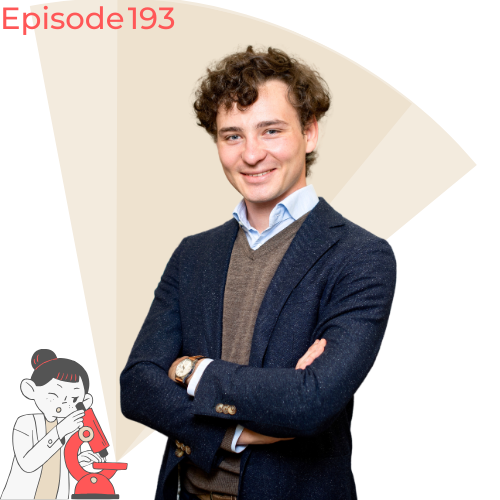What to Expect:
In this episode, Julien Barrier delves into his innovative research on graphene and other 2D materials. Julien shares his journey from studying materials science in France to working at the University of Manchester, the birthplace of graphene. He discusses his work on exploring the properties and applications of these materials and their potential for technological advancements.
About the Guest:
Julien Barrier
Julien Barrier is a researcher at the University of Manchester specializing in nanoscience and 2D materials. His work focuses on the properties and applications of graphene and other 2D materials, aiming to harness their unique characteristics for technological advancements. Julien’s research is at the forefront of nanotechnology, working in the same institution where graphene was first isolated.

🌟 Key Takeaways from This Episode:
- Graphene Research: Exploring the properties and applications of graphene and other 2D materials.
- Career Journey: From studying materials science in France to conducting groundbreaking research at the University of Manchester.
- Favorite Experiment: Investigating the mechanical properties of graphene for various applications.
🔬 In This Episode, We Cover:
Julien’s Research:
Julien’s research focuses on exploring the unique properties of graphene and other 2D materials. His work aims to understand their mechanical, electrical, and thermal properties and how these can be harnessed for various technological applications, including electronics, energy storage, and materials science.
Julien’s Career Journey :
Julien’s academic journey began with a Bachelor’s in Materials Science in France. He pursued his passion for nanoscience, leading him to his current role at the University of Manchester, where he conducts groundbreaking research on graphene and other 2D materials.
Julien’s Favourite Research Experiment :
Julien’s favorite experiment involves investigating the mechanical properties of graphene. By understanding how graphene behaves under different conditions, he aims to develop new applications for this remarkable material, including flexible electronics and advanced composites.
Life as a Scientist- Beyond the Lab
Julien values the collaborative nature of scientific research and enjoys engaging with the global scientific community. He is passionate about teaching and mentoring the next generation of scientists and values the opportunity to work in a cutting-edge field.
Julien’s 3 Wishes
- Increased funding for research: Julien wishes for more financial support to advance innovative research projects.
- Greater collaboration between researchers: He advocates for stronger partnerships to enhance knowledge sharing and collaborative efforts in research.
- Improved public understanding of scientific research: Julien emphasizes the importance of public awareness and support for scientific advancements.
Julien’s Time on @RealSci_Nano:
Julien will be taking over the RealSci_Nano Twitter account to share his research on graphene and other 2D materials. Followers can expect to learn about the innovative techniques and materials his work focuses on, as well as insights into the future of nanoscience.
Join the Conversation
Follow & listen to “Under the Microscope” on Spotify, Apple Podcasts, Castbox, Amazon Music, Goodpods.
Got your own favourite podcast app? Follow the RSS link to find Under the Microscope.
Watch the video of all Under the Microscope episodes on The Science Talk’s YouTube channel. While you are at it, make sure to subscribe to our YouTube Channel.
Learn more about Under the Microscope – https://thesciencetalk.com/under-the-microscope/
Love what we do? Support us:
We also offer partnerships to scientists, research institutions, industry, funding bodies & societies.
Get in touch to start the conversation.
